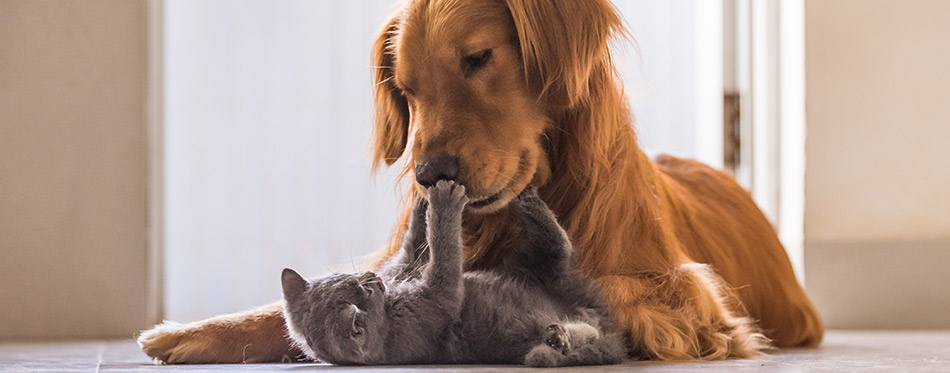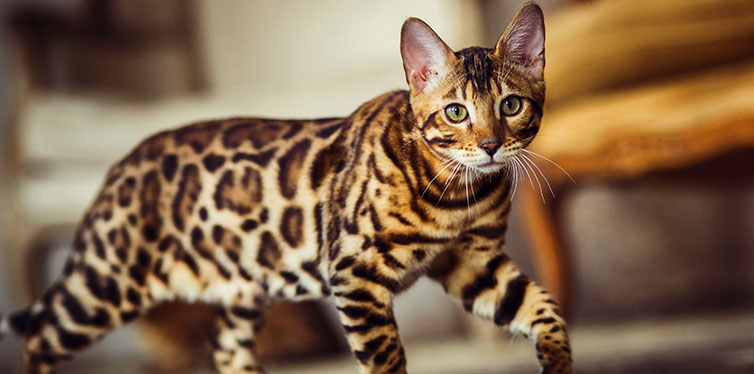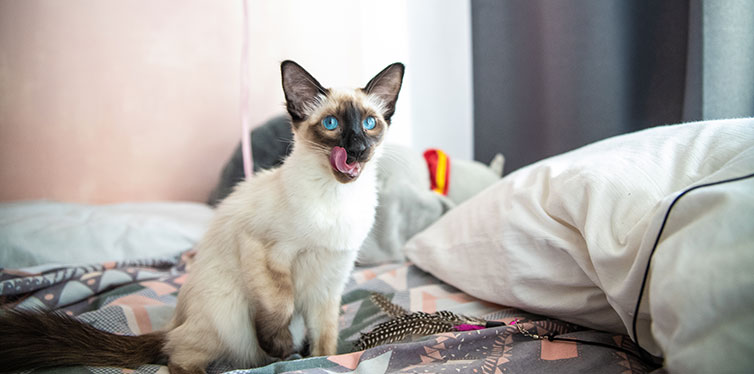We all know the old idiom “they’re like cat and dog”, which suggests that cats and dogs are the most unlikely friendship pairing imaginable! And whilst cats are most certainly skittish creatures by nature and prefer not to be approached by other, larger, more boisterous animals such as dogs, it doesn’t mean they hate them. If you’ve got a house with a dog already in it and you’re trying to find the best cats for dogs in order to bring a new feline friend into your home, look no further. We’ve put together a long list of the top 25 cat breeds, in no particular order, that are best suited to a canine household, and may even have a shot at becoming your pooch’s friend!
Australian Mist
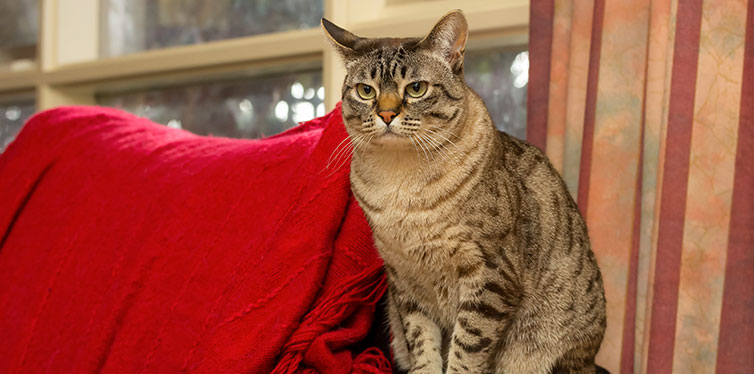
Australian mists are beautiful cats with distinct spotted and striped patterning in their fur. Supposedly, so long as your get your kitty spayed/neutered they are one of the many cat breeds that can actually get along quite well with dogs and other cats. Australian Mist cats are actually also thought to be good choices for wannabe dog owners, thanks to their laid-back personality traits and general loveableness.
British Shorthair
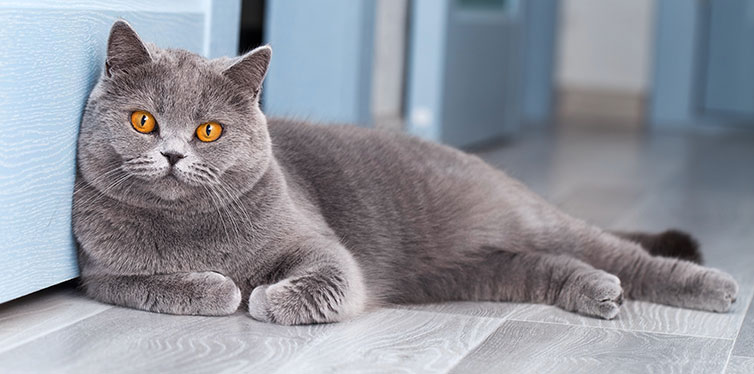
British Shorthairs, adorable round-faced cats are a brachycephalic cat breed that has a naturally independent nature. This independence can make them a good fit for canine companions. They are considered tolerant of both dogs and children. Additionally, they are often kept in households with a wide variety of pets including rabbits and birds.
Devon Rex
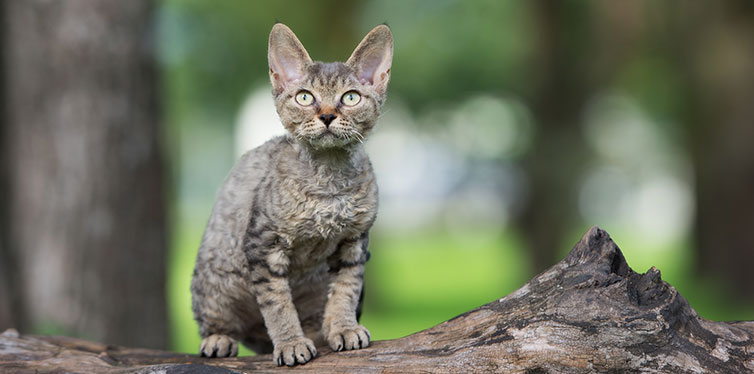
The Devon Rex is a highly sociable breed that enjoys the company of people and animals alike. This laid-back social approach easily makes this one of the best cat breeds for dogs. They enjoy having big families to play with. Additionally, if you introduce a Devon Rex to a dog whilst it is still young, you can have a much higher chance of them forming a bond with their new canine sibling.
Norwegian Forest Cat
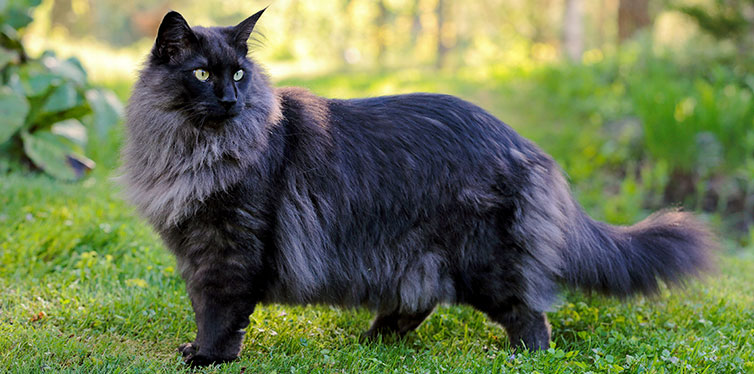
The Norwegian Forest cat is a stunning long-haired cat breed with distinct long tufts of fur that protrude from its ears. They have very adaptable personality characteristics with a natural ability to adjust more easily than many other feline breeds. This more relaxed temperament can help a Norwegian Forest cat to get used to having a family dog around.
European Burmese
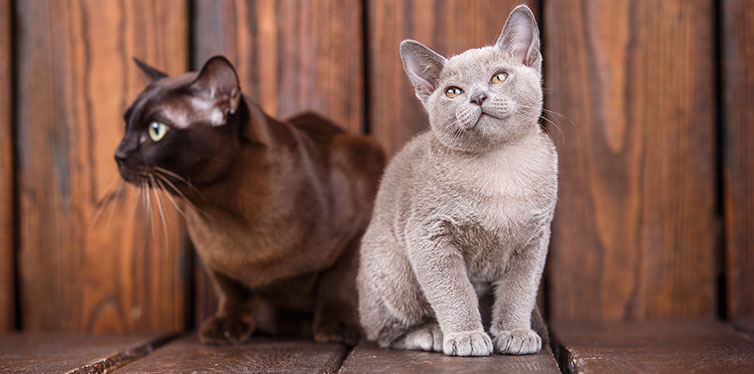
Piercing eyes, pointed ears, short hair, and fur characterized by a soft ombre color – European Burmese cats can have a tendency to look quite harsh to the untrained eye. However, They are a highly affectionate and loyal breed. The affectionate personality trait makes them one of the best breeds that get along with all sorts of dog breeds. These beautiful felines have even been known to befriend a dog or two.
Japanese Bobtail
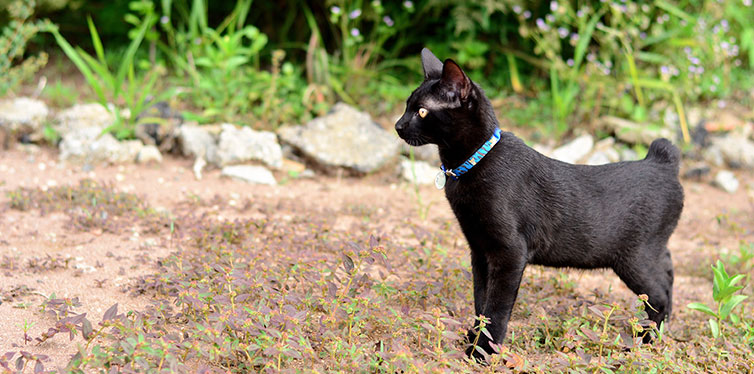
Named for their tiny stumpy tails that can be likened to that of a rabbit, the Japanese Bobtail is an energetic, friendly cat breed ideal for cat parents thinking of bringing a dog into the house. Bobtails generally prove people wrong when it comes to misconceptions of their species as they are kind, warm, playful, and loyal. Not only do they get on well with dogs, but this breed is supposedly particularly good with children.
Bengal

Bengal cats bear a striking resemblance to leopards thanks to their uniquely spotted fur. Additionally, they may not be the first breed spring to mind when trying to think of cats that get along with dogs. However, their confidence and curiosity often act as a driving force to seek out a new friend. And that confidence can help them to face up to a giant scary dog. It especially helps with kittens as they have a fearless nature that is perfect for bonding and playing with your pooch.
Balinese

An extremely unusual-looking cat breed. The Balinese cat has a signature appearance that includes pale fur with dark ears and a dark face. But their standout feature is their large pale blue eyes that stand out in contrast. They are extremely loving, curious, and gentle by nature. Where dogs may be seen as their natural enemies, typically a Balinese cat gets on well with its family and other pets, including dogs.
Sphynx
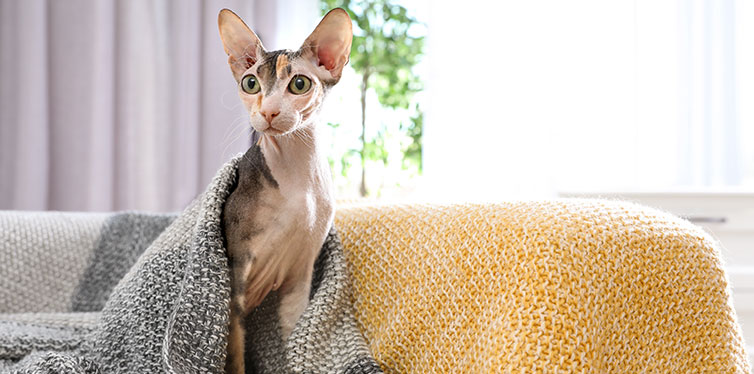
As you may already know, a Sphynx cat is bred with no fur at all. As a result, they often favor the warmer spots around the home to keep cosey. Because of this need for warmth young Sphynx cats will seek to share the body heat of both human and animal companions alike. They make especially excellent lap cats for this reason. Whilst they will be naturally drawn more towards humans, they have proven to get along with dogs just fine given the proper introduction.
Turkish Angora
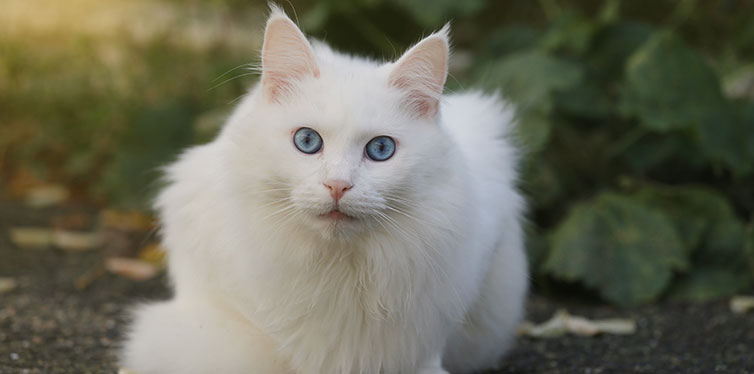
Pure white, with bottle brush-like tails, Turkish Angoras are a luxurious-looking breed that requires plenty of maintenance to keep spick and span. They are a highly intelligent breed that can adapt to new situations with relative ease. As a result, they have made our list as one of the cat breeds that get along with dogs, as they generally adjust quite easily to them. They are assertive, which helps them to become the more dominant house pet – removing the need to fear a dog.
Lykoi
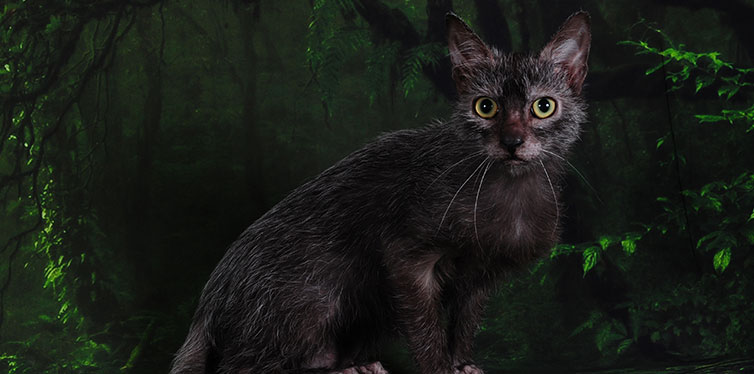
Lykoi cats have a naturally ratty look to their fur, almost as if they’ve been dragged through a hedge backward. They are generally quite cautious as cat breeds go, and so they can take longer to warm to a new dog in the home. However, the secret to introducing your Lykoi to a dog is to make it a gradual process. If possible let them meet your dog a few times before they come home. Fortunately, once they familiarise themselves with a new pet they warm up to them quite quickly.
American Bobtail
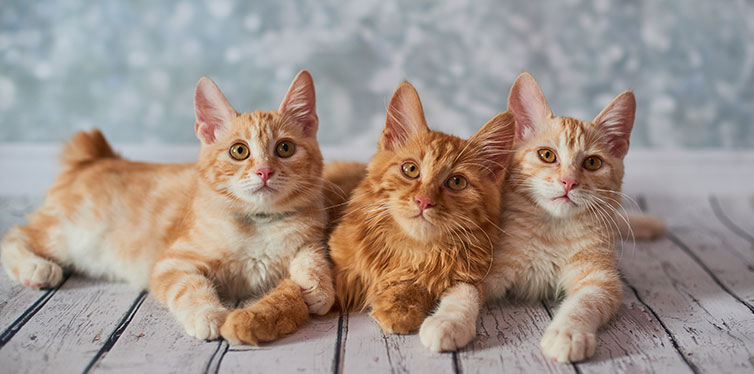
Much like the Japanese Bobtail, the American Bobtail is named for its stubby tail that doesn’t tend to grow much longer than a couple of inches. They are generally an easygoing breed that enjoys interacting. This generally means that they are among the cats that are good with dogs according to the Cat Fanciers’ Association (CFA). More and more people are welcoming these loving cats into their homes thanks to their friendly reputation.
Ragamuffin
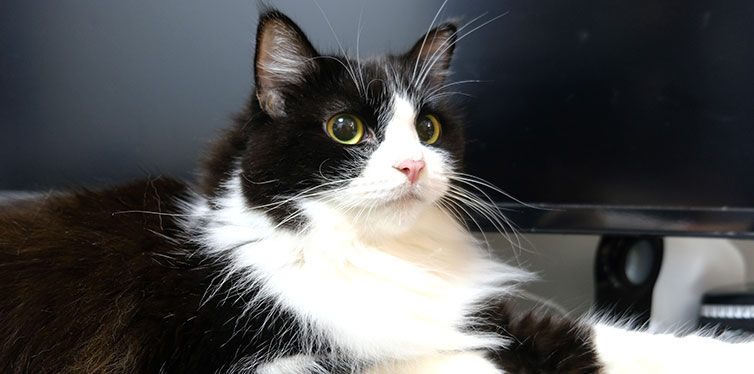
Snowy white, with long fur and small pointed ears, Ragamuffin cats are generally a very patient kitty breed. This makes them ideal kitties for any pet parent that already has a dog at home. Calm cat breeds tend to do well adapting to unfamiliar environments and dog breeds. The Ragamuffin is no exception, working especially well with boisterous personalities as they are able to exercise a level of patience that other cat breeds may not be able to.
Siberian
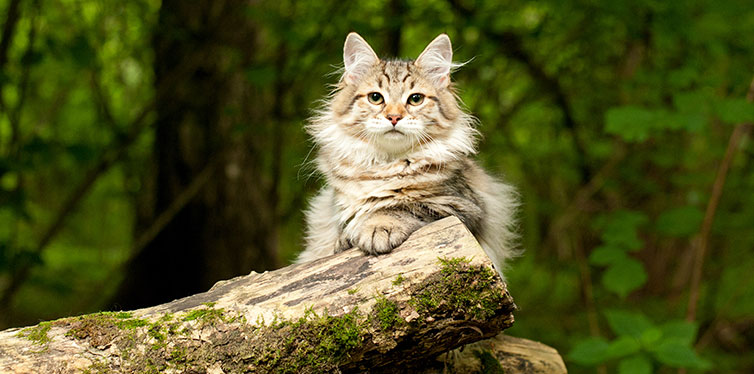
Siberian cats love a good cuddle, and can often see curled up in their owner’s laps. Their affectionate personality traits lend themselves well to busy home environments. This is also true for home with dogs, as they will usually familiarise themselves with every member of the family – canine or not. They also work well with children along with a variety of other animals.
Cymric
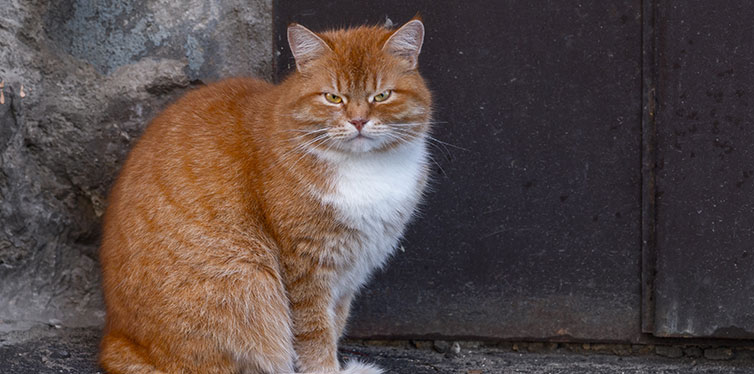
Usually quite fluffy, with round faces and kind eyes, Cymrics are people-oriented. Additionally, a Cymric is known for being even-tempered, which makes them predictable. If you’re thinking of getting yourself a Cymric to bring home to your poochie pal, just be sure to introduce them gradually. Cymrics may be well-tempered, but can still be startled like any cat. A gentle introduction can help to avoid negative associations that may impact your pets’ relationship in the future.
American Shorthair
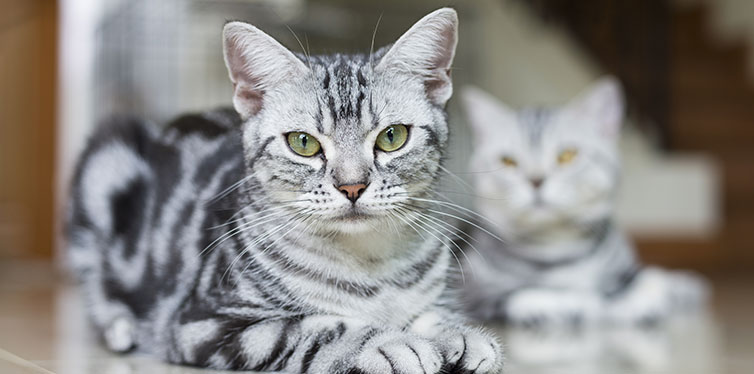
According to the Cat Fanciers’ Association website, American Shorthair cats are known for their “sweet personalities”. They are also highly amiable when it comes to children, dogs, and other pets. Meaning they are able to exercise lots of restraint and patient when it comes to a family pooch. Additionally, you won’t have to worry about any pet sibling rivalry seeing as they are a laid-back and independent breed.
Siamese
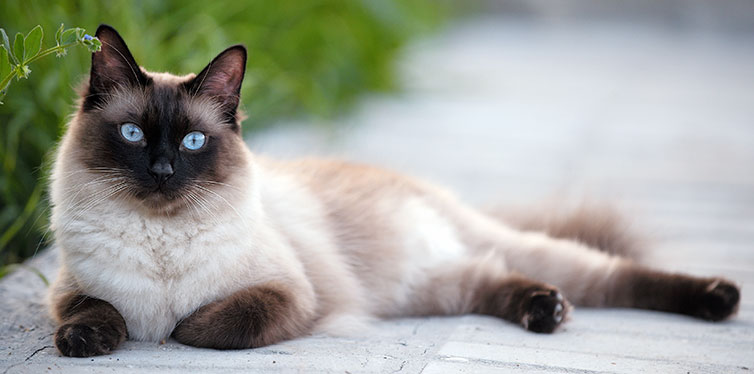
Siamese cats are known for their domelike, striking blue eyes, and large pointed ears atop a slender frame. They are highly affectionate, social, and loving, not to mention loyal. Their social personalities mean they often seek out activities and playtime, so having a dog alongside your Siamese can work as the perfect inter-species playtime companion for your kitty.
Maine Coon
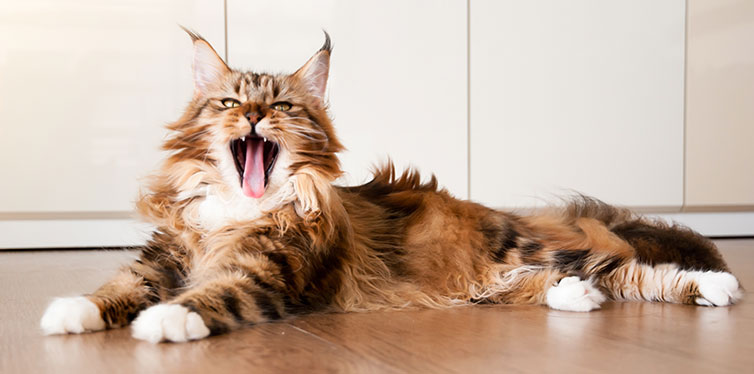
Maine Coon cats are extremely regal and impressive to look at with their mane-like fur (no pun intended) and pointed fur-tipped ears. However, despite their stone gaze, they are frequently described as “dog-like” because of their playful nature and trainability. The Maine Coon breed has even been known to walk on a leash like a dog. So it’s no surprise that they generally get along fine with dogs too.
Turkish Van
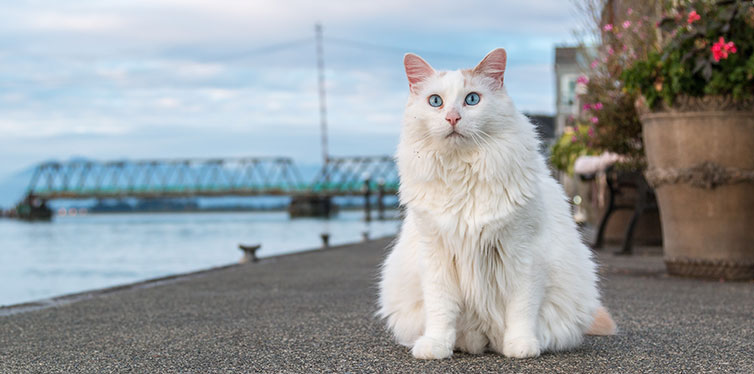
The Turkish Van can be put with almost any dog breed thanks to their companionability and curiosity. Though it is worth noting that this beautiful feline needs to feel like the boss of the household. So any family dog that will be living with it needs to respect your kitty’s need to lord it over them. Generally speaking, this personality trait is something that helps to balance their relationship and takes away the element of uncertainty for your feline friend.
Ragdoll
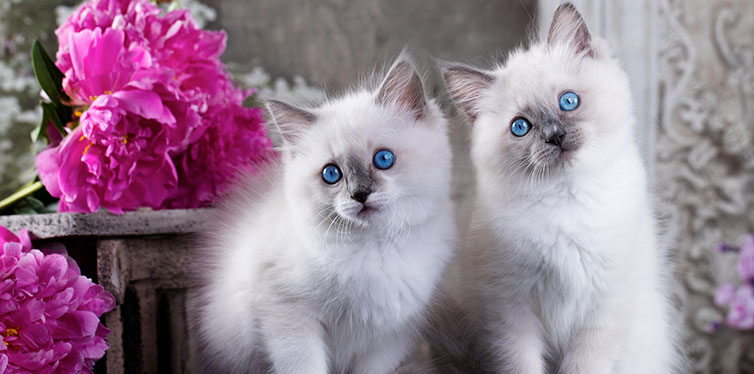
Ragdoll kitties are frequently found in the modern family home, slinking around corners and watching the daily goings-on. They are friendly, curious, intelligent, and gentle, which makes them a great fit for any small dog breed that isn’t too intimidating. Many Ragdolls enjoy joining dogs on walks, as they are often trained to walk on a leash in order to get their exercise. Walking your cat alongside your dog can be a tremendous bonding experience for the two of them and is well worth trying.
Tonkinese
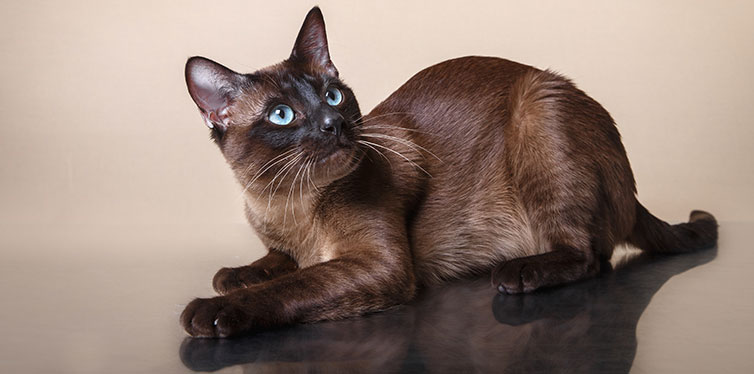
Tonkinese cats are a mix between the Burmese and Siamese breeds. They have large, lamp-like eyes that can see straight into your soul, and are highly attached to their owners. Getting a Tonkinese kitty alongside a puppy can be the perfect way to provide both of your pets with some company whilst you are out of the house – something many a pet parent worry about if they work long hours.
Birman
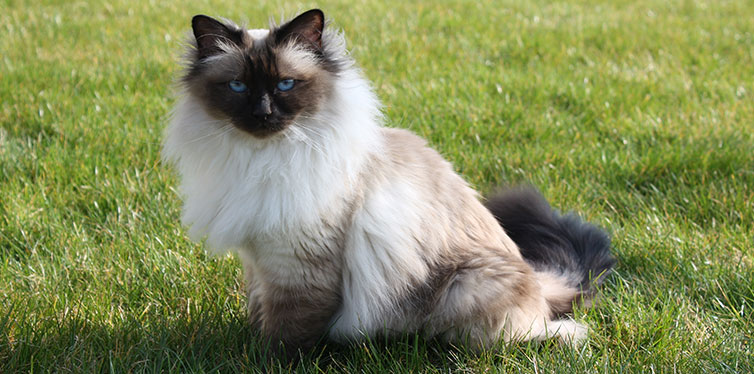
A standout personality trait of the Birman cat breed is their inclination to play! They typically enjoy chasing a ball, playing tag, and even playing fetch. They are relatively easy to train and enjoy having playmates in the house – the more the merrier. There are even videos available of this fun-loving kitty breed playing with their canine families. They are family-oriented, loveable animals that can play well with anything from toy poodles to a golden retriever.
Abyssinian
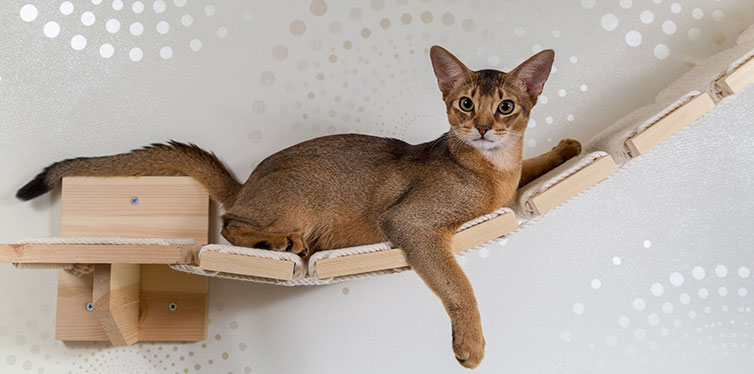
Curiosity is the standout feature of an Abyssinian’s personality. They love to explore the world around them and watch everything their families get up to. And that curiosity extends to an interest in pups, which helps this cat breed to get on with dogs better. Additionally, their independent tendencies prevent sibling rivalry as they won’t be competing for your affection.
Havana Brown
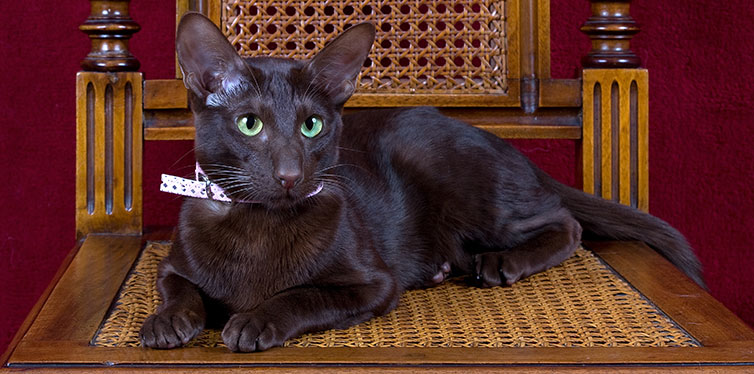
A kitty breed that among those to most closely resemble their big cat cousins. Havana Brown cats have the long face and piercing eyes of a panther, with the intelligence to go with it. They are sharp as a whip, but also have a lot of affection to give when it comes to their family. This isn’t just limited to humans, however, Havana Browns are also known to get along well with dogs, children, and other animals.
Munchkin
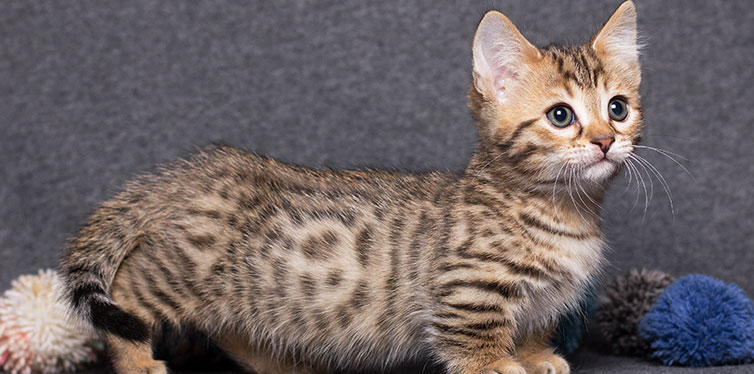
Muchkin kitties are extraordinarily cute, with their short legs and fluffy faces. They are highly sociable and are happy to share their territory with dogs and children. Their playful temperament can be likened to that of a golden retriever, making them loveable and kind. You’ll find that that kindness is often extended to canine family members too.
FAQs:
Q: Do male or female cats get along better with dogs?
A: When it comes to finding a cat that will get along with your dog, it’s not so much a question of whether male or female kitties get along better with dogs as a whole. It’s more a question of your dog’s gender. If you are pet parents planning on bringing a cat into a household that already has a dog, you will want to pick a cat of the opposite sex to your pooch. There is no surefire explanation for this, though it is thought that it is because they see each other as less of a threat, be it because the personalities of the two sexes are better matched, or because they don’t have to compete with each other. Either way, this is a good rule of thumb to stick with – though not a guarantee!
Q: Is a cat a good companion for a dog?
A: Now, this is entirely dependant on the personalities of both your dog and cat. If your feline family member is naturally aloof, you can expect they are not likely to show much interesting in their canine housemate. If your cat was particularly young when it was introduced to your dog then there’s a chance they may grow very attached to them – like a mother figure. There is no guarantee that cats and dogs will be perfect family members when mixed together, much as is the case with humans. You just have to encourage good behavior and hope for the best.
Q: How long does it take for a cat to get used to a dog?
A: There is no predetermined timeframe in which a cat will miraculously become adjusted to a dog’s presence. In fact, in some cases, the cat never gets used to the dog being around and will spend all of its time perched atop the furniture to avoid contact. How long it takes for them to get used to the new resident dog can reply on their breed, their age, whether or not they have disabilities, their mobility, their confidence, and a multitude of other factors. In general, it can take several weeks, or even months, for a cat to adapt to the new canine family member.
If your kitty is consistently showing signs of heightened stress and anxiety and does not seem to be calming down, it may be worth looking into cat calming products or techniques.
Check out our guides on the Best Cat Calming Collars, Best Cat Calming Treats, and Best Cat Calming Sprays.

